Latest News From Health Monitoring
Keeping you up to date on recent initiatives, software enhancements, and the national conversation about public health
Keeping you up to date on recent initiatives, software enhancements, and the national conversation about public health
Recently, CMS released the requirements for Stage 2 Meaningful Use. These requirements amended the compliance dates set forth in Stage 1, allowing providers more time to meet Stage 2 criteria. Now, a provider that attested to Stage 1 in 2001 will attest to Stage 2 in 2014—not 2013.
In the past few weeks, the H3N2v virus has been in the news—a new swine flu that has already resulted in one death in Ohio. The virus, which is transmitted from pigs to people, caused the U.S. Centers for Disease Control to warn people with serious health problems to avoid contact with pigs. This includes […]
Topics for our newsletter are often born around the watercooler—derived from informal conversations about timely issues that have a significant impact on Public Health Professionals. Recently, a watercooler topic in the HMS office was “Community Health Surveillance.” So much time is spent discussing syndromic surveillance that the community element of it seems to have been […]
HIEs have been getting some big press coverage recently. Tennessee recently decided to abandon its plans for a statewide HIE, while Nevada just went live with a service that enables HIE participants to share diagnostic quality images.
Last week, CMS released the requirements for Stage 2 Meaningful Use. As expected, they build upon Stage 1 requirements by making many of the “optional” Stage 1 requirements mandatory. Perhaps the most significant change in requirements is that the reporting of Syndromic Surveillance data is mandatory in Stage 2 for eligible hospitals and critical access hospitals.
For now, eligible professionals are excluded from this requirement because most public health agencies are not equipped to receive data from this group.
Other updates: To qualify, Syndromic Surveillance data must be submitted for all of 2014, the “entire EHR reporting period.” Previously, data only needed to be submitted for 3 months.
For a list of facts regarding the updated requirements, please visit the CMS website.
With so much talk focused on Syndromic Surveillance, the overall picture of Community Health Surveillance seems to be getting lost.
Until the Meaningful Use guidelines were developed, the term “Syndromic Surveillance” wasn’t typically utilized. Its connotation is less community-centered and more focused on single issues.
In short, the requirement to achieve Syndromic Surveillance requirements may be overshadowing the bigger view of Community Health Surveillance.
At Health Monitoring Systems, we are planning for the future of Community Health Surveillance by providing our clients with information beyond Syndromic Surveillance.
We can help you to monitor air quality, drinking water quality, poison control center, and chronic disease data—information that provides a well-rounded view of your community’s overall health.
Our goal, like yours, is to provide timely, relevant information that matters most when it comes to overseeing public health. Contact us today to learn more.
Our mission: Provide services that focus healthcare resources on existing and emergent threats to community health.
Our customers: State and local public health departments and health systems. We currently serve Connecticut, New Jersey, Pennsylvania, Ohio, Wyoming, and several counties in California, covering a total of more than 40 million people.
What we do: Monitor real-time health-related data for community health indicators. We collect data from nearly 600 hospitals and 3,600 ambulatory systems.
Support email:
support@health-monitoring.com
Emergency support: 1 (844) 231-5776
Additional guidance:
EpiCenter User Manual
700 River Ave., Suite 130
Pittsburgh, PA 15212
Corporate office: 1 (412) 231-2020
General calls: 1 (844) 231-5774
Emergency support: 1 (844) 231-5776

